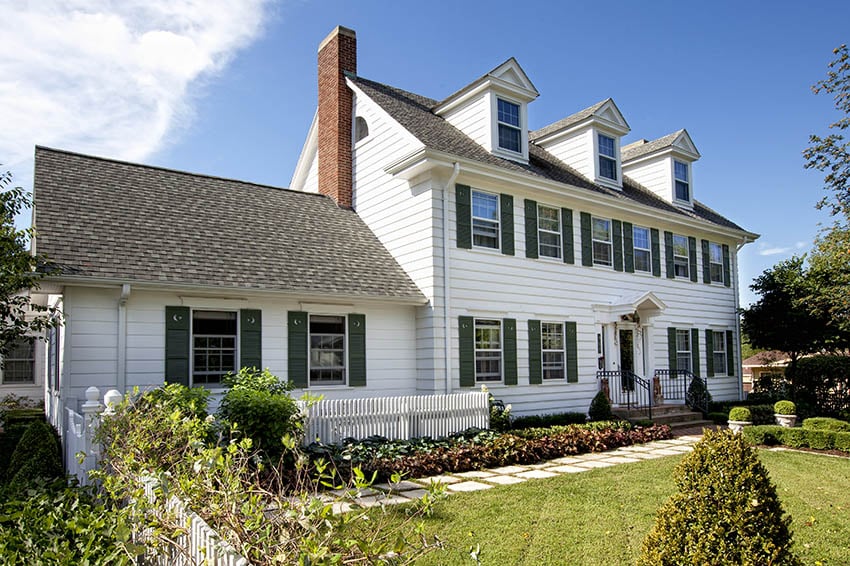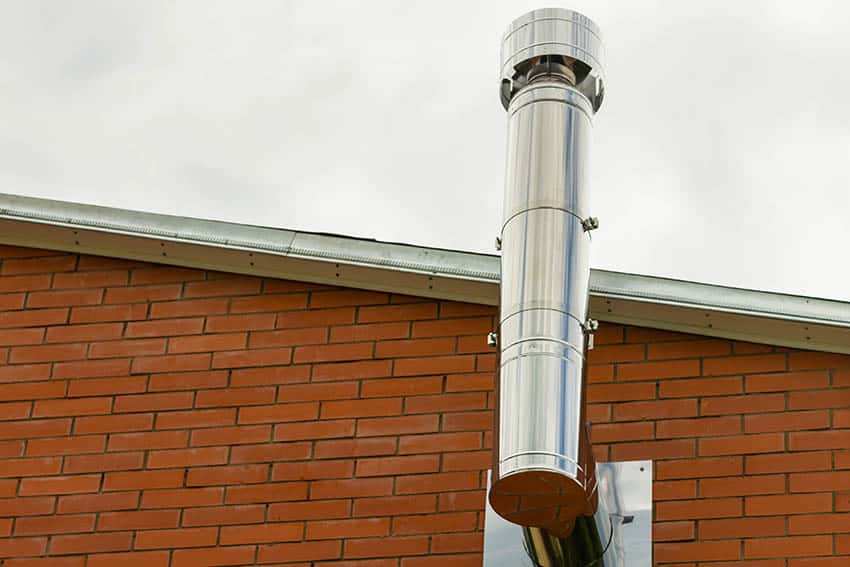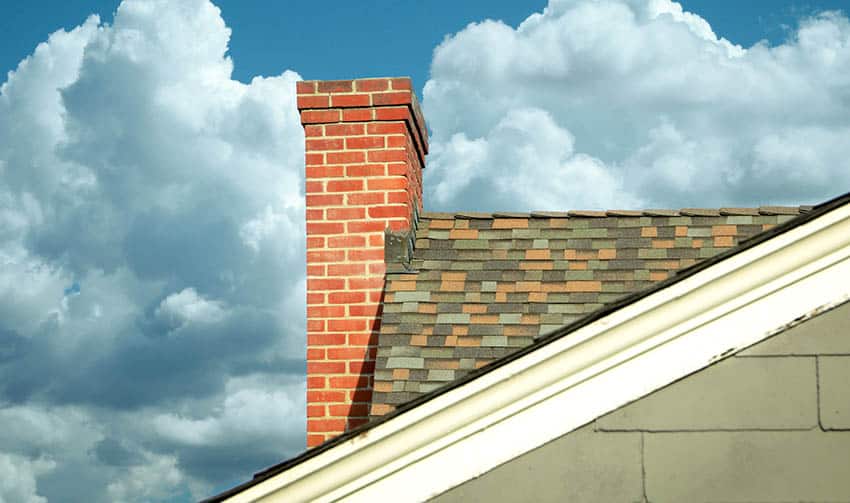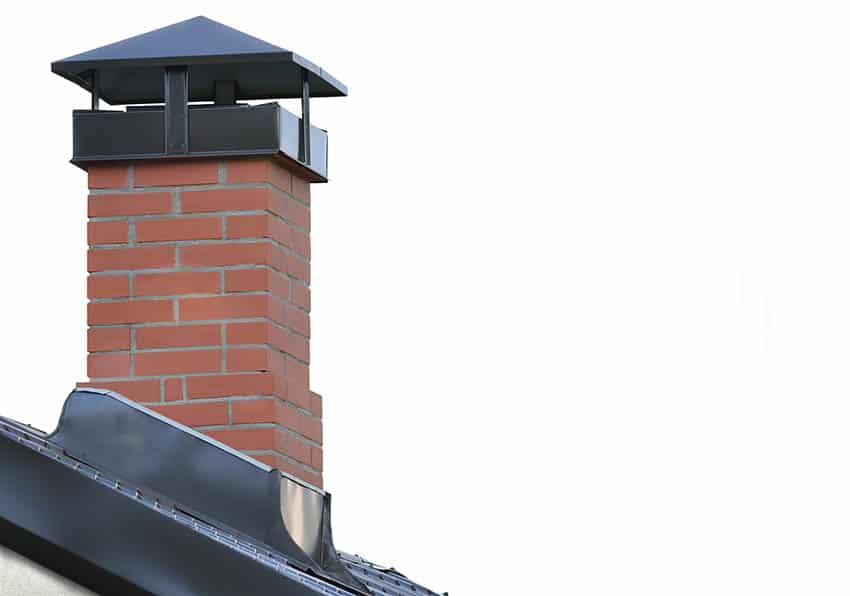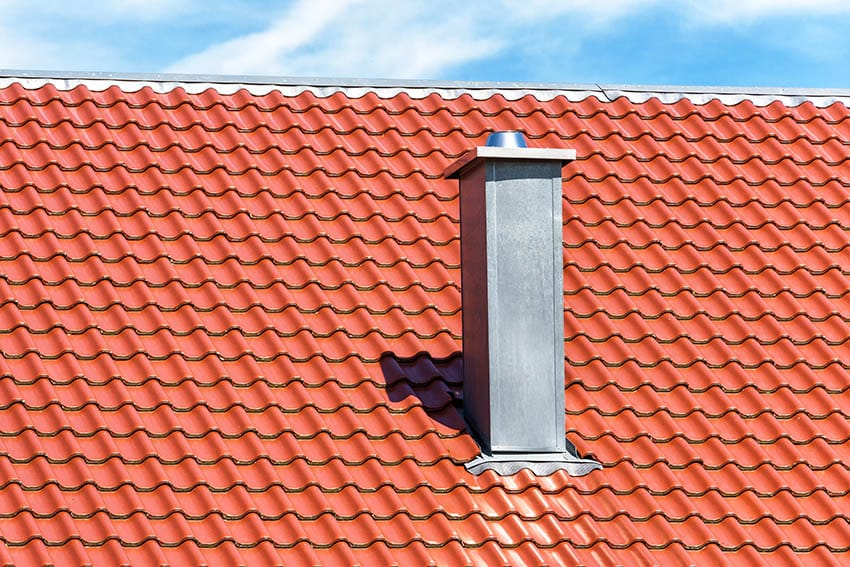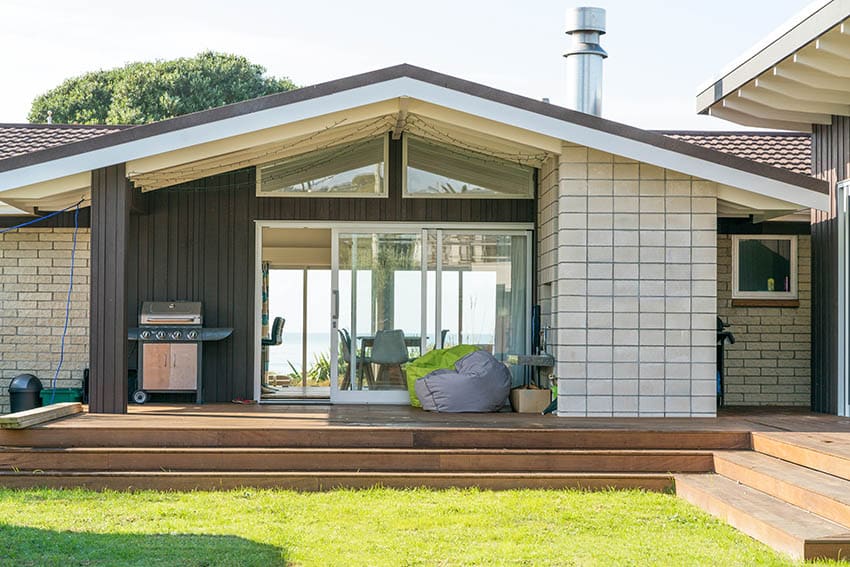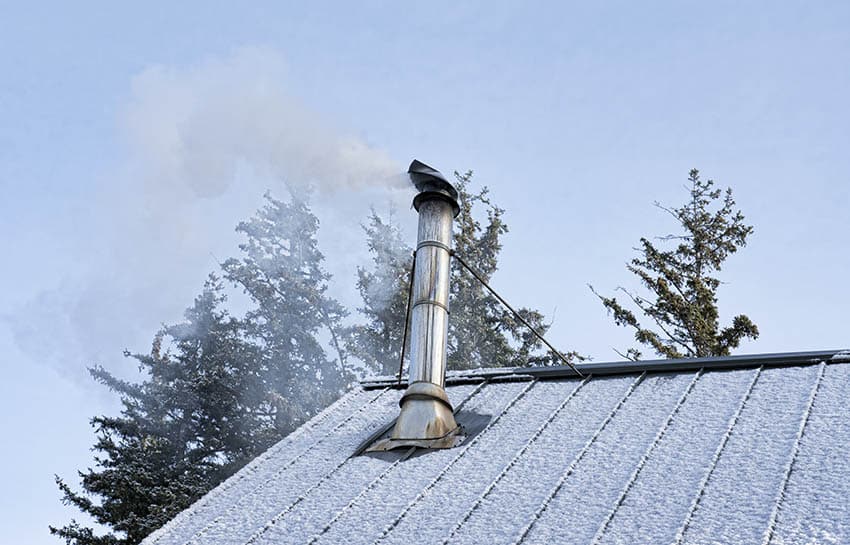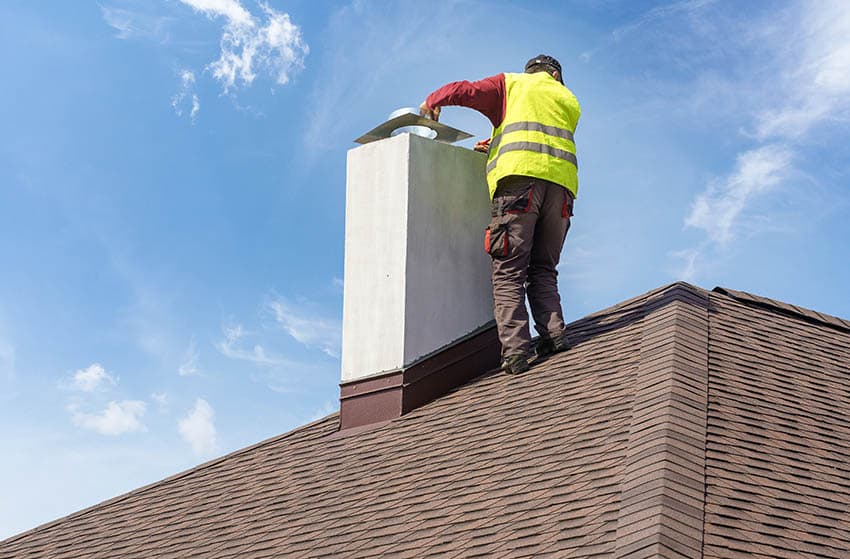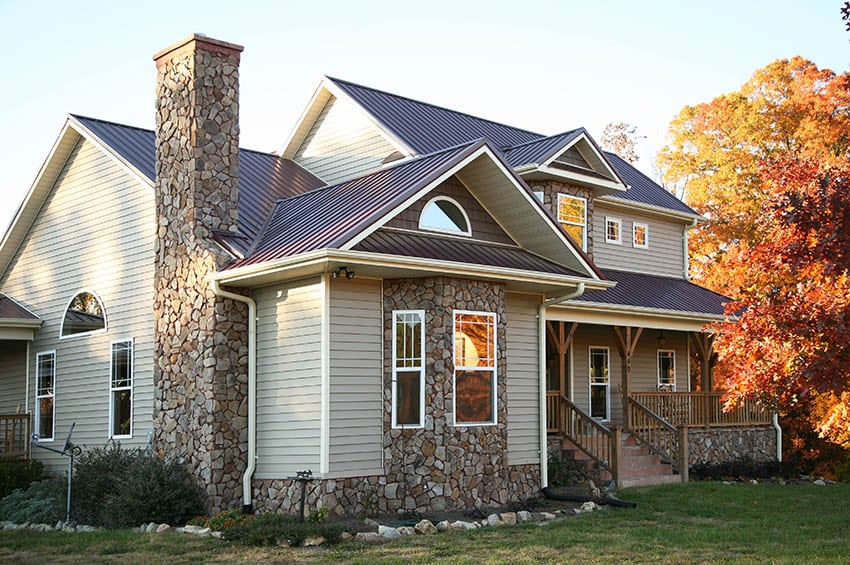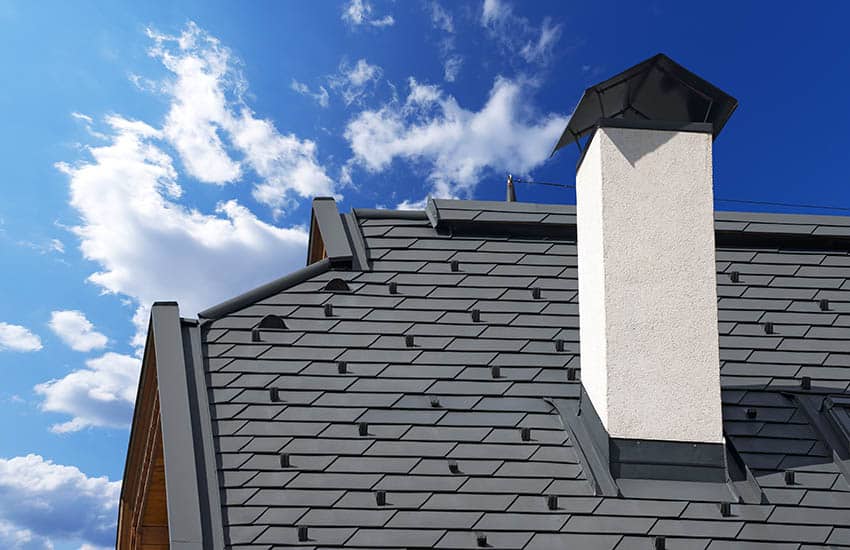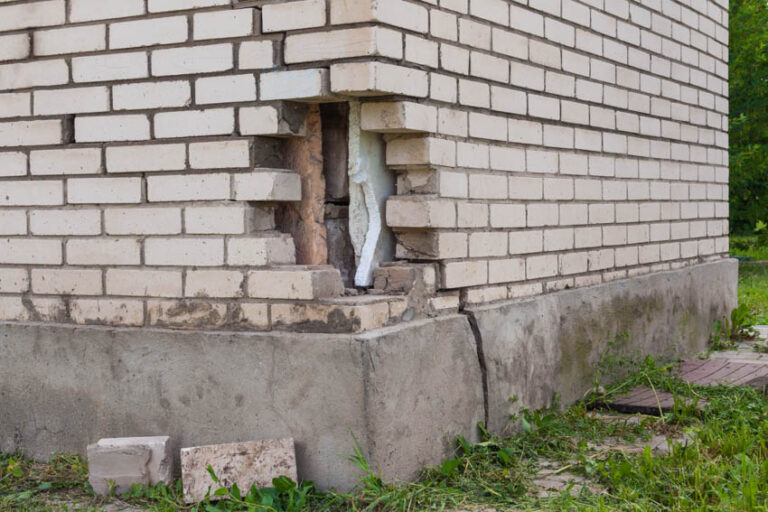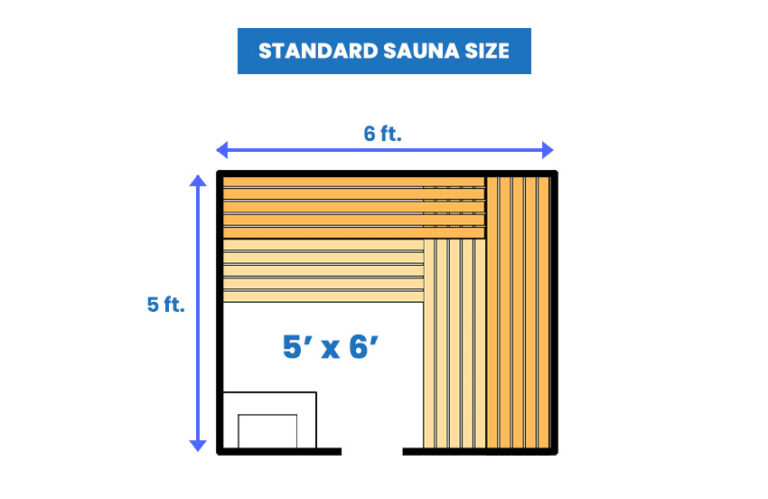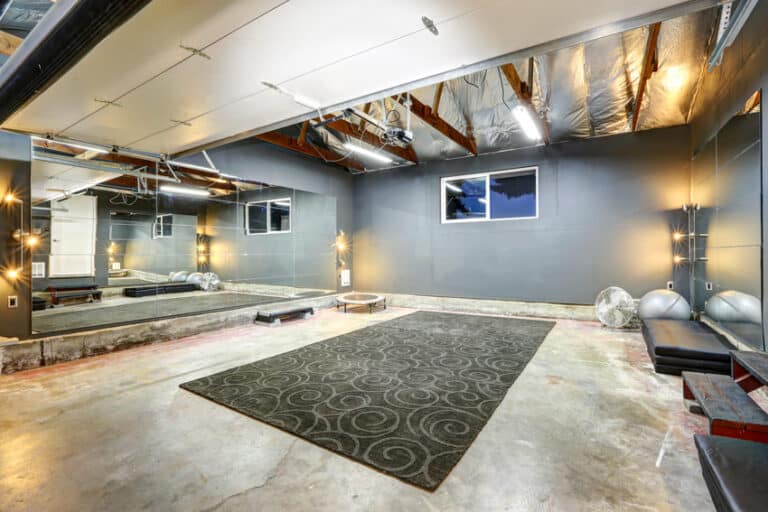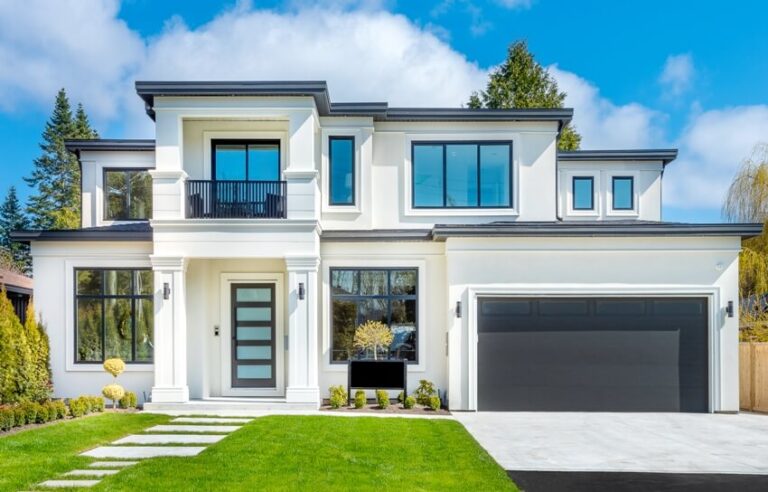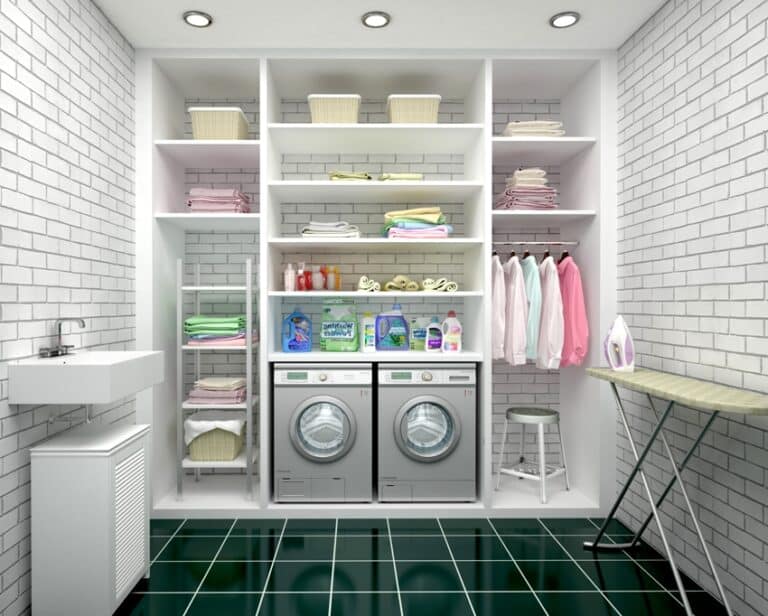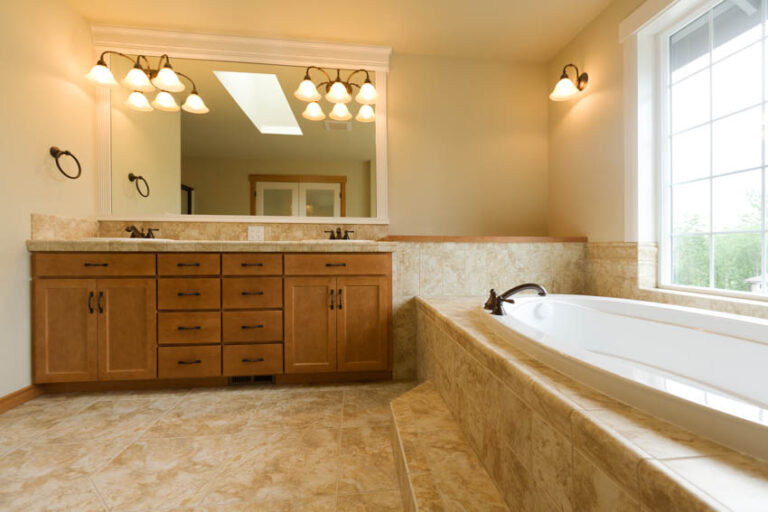Types Of Chimneys (Design Guide)
In areas with a cold winter, a fireplace can help keep your household warm when the temperature begins to drop and is a cozy addition to any room. Before you decide on what type of fireplace you want, however, you should also consider the different types of chimneys you can install.
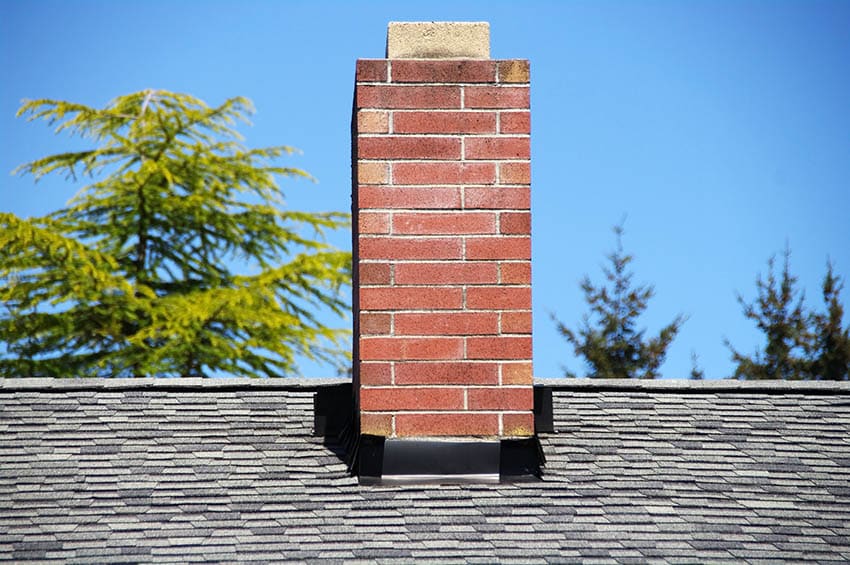
Perfect for those dreamy White Christmas scenes, it adds a cozy touch to any room. Imagine gathering around a crackling fire, sipping warm drinks, and enjoying holiday tunes. If this appeals to you, then a fireplace is a great choice. A chimney is a vital component of any home with a fireplace, furnace, or even a boiler, so you need to decide on the chimney before you even begin installing the fireplace.
What Is A Chimney?
A chimney is an architectural feature that is used for ventilation. It is a vertical channel or pipe that is connected to a furnace, boiler, stove, or fireplace and is meant to conduct smoke, heat, and gases created by the operation of these features outside of a building.
While the chimney starts inside a building, it typically protrudes up and out of a building’s roof. This visible part of the structure is called the “chimney stack”.
While holiday greeting cards may depict the chimney stack as a cute obstacle that Santa Claus needs to circumvent to deliver gifts, there is a more important purpose for a stack. It is through the smokestack that the smoke and gases from your fireplace are eventually vented outside.
How Does A Chimney Work?
A properly working chimney keeps smoke and fumes from spreading inside your home by redirecting them outside. A chimney works by using the properties of “airflow” or the movement of air.
Hot air naturally rises, while cold air sinks. Chimneys take advantage of this property of air in what is called the stack effect or the chimney effect. With the stack effect, warm air from say a furnace or a fireplace moves up through the vent. This air is called the “draft”
Types of Chimney Designs
Several types of chimney designs are commonly installed today. You should make your decision on what style to select depending on the type of fireplace that you want to install as well as the style and design of your home.
Metal
If your home has a metal chimney, it merely means that the shaft and stack are made of metal, usually stainless steel.
Metal chimneys are a great choice for almost any home as they will complement almost any design style. They are usually the “go-to” for any architect who is designing a home in the industrial or modern styles.
Metal venting systems are versatile; you can install them in double or triple-walled structures. Just make sure that the wall that your venting runs along is fully insulated. Also, if you are installing a metal chimney on a triple wall, make sure there is airflow between the layers.
Pros and Cons of Metal Chimneys
The major reason for the rise in popularity of metal venting is its durability. Metal will not corrode or rust easily and they are also abrasion-resistant. Metal is also a good heat conductor, which makes it a good material for this purpose.
One downside to metal chimneys is that can only be installed at 15 and 30-degree angles. Also, some people don’t like the look of “plain” metal stacks.
While metal chimneys can be painted attractive colors or have a decorative top installed, the preferred way to make a metal stacks more attractive is to encircle it with masonry, wood, or even just an additional decorative metal casing.
Masonry
A masonry chimney is often thought of as a “standard” or “traditional” design. It is the most common type of chimney used in homes and residences.
If you’ve never seen one in real life, just seen pictures or illustrations, chances are that these are the designs you’ve seen. They are usually made up of bricks, blocks, or stones stacked upon each other and held together by cement or mortar.
Pros and Cons of Masonry Chimneys
One of the advantages of a masonry chimney is that the bricks that make up these types often have heat-absorbing properties. This is especially handy during winter months as the heat absorbed by the bricks will be radiated back into the room. This adds an extra warming effect to your fireplace or furnace.
Masonry chimneys are also considered quaint and charming, so having a nice masonry smokestack sticking out of your roof often adds to the aesthetic appeal of your home and will increase its resale value.
One disadvantage to masonry though is, that because of the material they are made out of, it can be very heavy. A typical masonry chimney will weigh around 6 to 7 tons and could put a strain on your home’s foundation.
You will have to make sure you build a solid foundation for your masonry stack and that can increase the overall building cost of your home.
Prefabricated Chimneys (Factory Built)
Many contemporary homes, if they have a fireplace or furnace and need venting, have a prefabricated chimney.
A prefabricated chimney is made in a factory, usually made from some sort of sheet metal. Prefabricated venting manufacturers offer systems in a variety of designs and sizes, you just need to pick the appropriate one for your home.
Once you’ve chosen what sort of prefabricated design you need, the manufacturer will deliver the product to you in several parts; these are then assembled or installed on-site at your home.
Pros and Cons of Prefabricated Chimneys
As we mentioned, prefabricated chimneys come in a variety of designs. This means that there will be prefab products that are sure to fit your overall home design.
Installing a prefabricated design is also cheaper than building masonry or metal venting systems. It is also quicker to install a prefab stack rather than to build one.
It should be noted, however, that prefabricated chimneys tend to be less durable than masonry and metal types. They are also less able to withstand high heat, so you will have to regularly inspect your stack and maybe repair or replace some sections.
Types of Prefabricated Chimneys
In general, there are four types of prefabricated chimneys. These are air-insulated, air-cooled, combination, and double-walled designs. You should know the differences between the types as it will also help you decide which one will work best for you.
Air-Insulated
An air insulated chimney is designed to minimize the airflow through the vent by trapping air between its metal layers. Because the heated air doesn’t dissipate, it acts like an insulator.
The advantage of these types is their increased heat effect. Since hot air is “trapped” within the stack walls, it allows the heat to be radiated back through the vent and into the room.
An air-insulated chimney is a bit more expensive and difficult to install than other prefabricated designs but it is an excellent choice for homes in areas that experience extreme cold. They can stand up to the cold better than other types of venting systems and will last longer.
Air-Cooled
An air-cooled chimney has multiple layers of metal with some space in between to allow for airflow. It’s similar to air-insulated designs in that way, but the difference is that an air-cooled chimney doesn’t “trap” the air.
Because it is designed to let the hot air out, the heat from the chimney is dissipated, resulting in a slight cooling effect. Because of this, it’s not really recommended for installation in areas that experience extreme cold.
Another reason to avoid air-cooled designs if winters are particularly harsh in your area is because extreme cold can result in a lot of condensation within the metal layers which could prematurely corrode your entire venting system.
Combination Chimneys
A combination chimney is a prefabricated product that combines several features from other types. For example, some manufacturers offer designs that are both air-cooling and air-insulating.
The types of combination models that you can get will often depend on the manufacturer, so make sure to look closely at their catalog to find a unit that will suit your needs and will stand up well to the weather conditions of where you live.
Double Walled
A double-walled chimney is also known as mass-insulated. It is made up of double layers of metal, usually stainless steel, and a layer of insulation.
Usually, these designs look like a steel cylinder within a bigger steel cylinder with the space packed with insulation. Having insulation in between the two layers of metal reduces the amount of heat exchanged.
Wood Burning Stove Chimneys
If you want to have a wood-burning stove as a heat source, you will need to make sure that you connect it to a proper wood-burning stove chimney.
Many styles of wood-burning stoves can be easily connected to existing venting. Wood-burning stoves can be connected to metal and masonry smokestacks. Many prefab chimney manufacturers will also offer products that will work with a wood-burning stove.
Wood burning stoves come with a stove pipe that you can attach to a vent that will carry the exhaust from the body of the stove and out through the venting stack.
Pros and Cons of Wood Burning Stove Chimneys
A wood-burning stove is easily attached to an existing venting system, so installing a wood-burning stove is easier and cheaper than building or installing a fireplace. It is highly efficient for heating a room.
Before installing a wood-burning stove, however, you need to make sure you have room for it. You will need to keep some space free around the stove as the heat radiating from it can damage walls and warp wood floors.
Fireplace Insert
A fireplace insert is a special type of wood stove that is designed to fit into an existing masonry fireplace. This type of stove then needs to be connected so that the flow of smoke and gases is directed through the masonry smokestack.
A fireplace insert connects to the stove through the use of a liner system that is inserted into the existing masonry vent forming a connection that will allow smoke and gas to be diverted away from the room and vented outside the building.
Depending on the type they can be fueled by wood, pellets, electricity, or gas. For wood-burning units, they can help produce more heat and help reduce heat loss.
Pros and Cons of Fireplace Inserts
The advantage of a fireplace insert is it makes use of existing infrastructure so it is easy to install. It is a cute and cozy addition to any room. They can help maximize heating efficiency, reduce energy costs.
Care needs to be taken, however, that the connections are made well, otherwise the smoke and gas could leak out and discolor the surrounding areas and spread emissions that can cause health problems. In addition, without an adequate seal sparks and embers can escape.
Cost to Add A Fireplace And Chimney
The cost to add a fireplace and a chimney to your home will largely depend on the types that you decide to install.
A custom-built stone fireplace will cost you about $7,500 to $15,000 to build, including labor and materials. A brick fireplace, on the other hand, will cost you about $5,500 to $11,000 to build.
Building these structures will add to the overall cost of building a fireplace. The average cost to install a new chimney will be from around $4,000 to 8,000.
The final cost will depend on the type of design you decide on and the size that you will need.
• Metal chimney $75-100 per foot
• Masonry chimney $120-240 per foot
• Prefabricated chimney $85-150 per foot
o Air-insulated $85 -100 per foot
o Air-cooled $100-130 per foot.
o Combination $120-150 per foot
o Double walled $90-100 per foot
• Wood Burning Stove $175-350 per foot
• Fireplace Insert $100-200 per foot
The prices for construction that we quoted above include labor and materials. It will not include any extras like decorative caps, finishes, or cases.
What are your favorite types of chimneys? Let us know in the comments section. For more related content visit our article about gas vs electric fireplaces.

